The Girl from Jones Beach

Brief Synopsis
Cast & Crew
Peter Godfrey
Ronald Reagan
Virginia Mayo
Eddie Bracken
Dona Drake
Henry Travers
Film Details
Technical Specs

Synopsis
Struggling New York City talent agent Chuck Donovan is hired by the producers of a television program to discover the identity of the model for "The Randolph Girl," a shapely woman drawn by commercial artist Bob Randolph. At Bob's studio, Miss Brooks, Bob's secretary, admits that even she does not know who the model is. Donovan then tries to convince Bob to reveal his secret, and while they are speaking, a man from a collection agency presents Bob with a bill for twelve gold bracelets. Later, a model arrives at the studio, and willingly admits to posing as the Randolph Girl. When Donovan confronts Bob with her statement, he confesses that the Randolph Girl is actually a composite of twelve different models, none of whom knows about the others. Thoroughly depressed, Donovan decides to kill himself. After sending a message to his girl friend, photographer Connie Martin, who always rescues him from his frequent suicide attempts, Donovan heads for Jones Beach, planning to drown himself. There, while searching for Connie through his binoculars, he spots a woman who is the perfect likeness of the Randolph Girl. By the time he rows ashore, however, she has vanished into the women's locker room, and he is unable to recognize her once she is fully dressed. Every day for a week, Donovan and Bob haunt the beach looking for the woman. Finally, Donovan guesses that Ruth Wilson is the mysterious woman and follows her home. He learns that Ruth is a schoolteacher who lives with her mother and younger brother Woody. Because she does not want a man to marry her for her looks, she purposely dresses in a dowdy style. Ruth teaches English to immigrants at night school, and Donovan persuades Bob to attend her class, posing as a recent immigrant from Czechoslovakia. Although Ruth is suspicious of Bob's mutating accent, she agrees to go out with him and gradually falls in love with him. When the newspapers announce that the Randolph Girl will be on television, all twelve of Bob's models expect to make an appearance. In the course of trying to mollify the women, Donovan accidentally drops Bob's address book at the home of one of the models. The next morning, all twelve of the models quit. Then Bob is spotted by Miss Brooks while he is with Ruth, and his real identity is revealed. Bob explains that after he saw Ruth at the beach, he wanted to meet her and thus enrolled in the class. He then adds that he is attracted to her mind, but perversely, Ruth wants him to admire her looks. Later, Bob refuses to attend a big party in honor of the Randolph Girl because he is in love with Ruth and wants to get married. The following day, Ruth asks Bob to meet her at Jones Beach. Donovan then phones Connie, planning to sneak a photograph of Ruth and leak it to the newspapers. When the picture runs, Emma Shoemaker, the dean of the school, asks for Ruth's resignation, and when she refuses, fires her. Ruth takes the school to court. Bob appears as a witness on her behalf and projects a film about bathing suits through the years. In one, a young Emma is seen being arrested for indecent exposure in the early 1900s. Then Ruth takes the stand in her bathing suit and states that her private life is none of the school's business. Ruth is reinstated, and she and Bob plan a double wedding with Donovan and Connie.

Director

Peter Godfrey
Cast
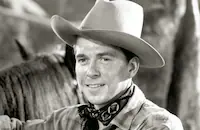
Ronald Reagan
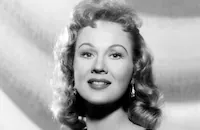
Virginia Mayo
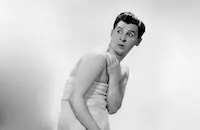
Eddie Bracken

Dona Drake

Henry Travers
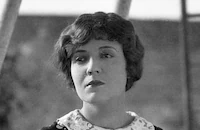
Lois Wilson

Florence Bates
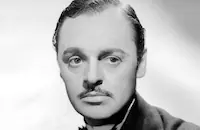
Jerome Cowan

Helen Westcott

Paul Harvey
Lloyd Corrigan

Gary Gray

Myrna Dell
William Forrest
Mary Stuart
Lennie Bremen
Buddy Roosevelt
Chester Clute
Dick Bartell
Billy Wayne
Richard Taylor

Dale Robertson
Guy Wilkerson
Angi O. Poulos
Antonio Filauri
Nick Thompson
Gregory Golubeff
Robert O'neil
Peter Camlin
Daniel De Jonghe
Sam Bernard
John Mylong
Nancy Valentine
Eve Whitney

Lola Albright
William Yetter
Sandra Gould
Alvin Hammer
Patricia Northrop
Bobby Barber
Dolores Castle
Glen Gallagher
Ray Montgomery
Creighton Hale
John Marston
Eddie Garr
Jack Gargan
Tony Merrill
Henry Iblings
Carey Harrison
Broderick O'farrell
Raymond Bailey
Kay Mansfield
Grayce Hampton
Wally Dean
Anthony Jochim
Luther Crockett
Henrietta Taylor
Philo Mccullough
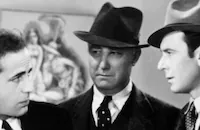
Jack Mower
Leah Baird
Oliver Blake
Maurice St. Clair
Grace Young
Carol Brewster
Joan Vohs
Betty Underwood
Alice Wallace

Joyce Lansing
Lorraine Crawford
Vonne Lester
Karen X. Gaylord
Crew
Allen Boretz
David Buttolph
I. A. L. Diamond
Edwin Dupar
Rudi Fehr
Stanley Fleischer
Alex Gottlieb
Carl Guthrie
William Kuehl
Art Lueker
John Maxwell
William Mcgann
Leonid Raab
Leah Rhodes
Dolph Thomas
Perc Westmore

Videos
Movie Clip



Trailer
Hosted Intro
Film Details
Technical Specs

Articles
The Girl From Jones Beach
Much of the praise resulted from his impersonation of a Czech immigrant, in a ploy similar to the one that would be used a decade later by Rock Hudson to seduce an unsuspecting Doris Day in their hit comedies together. Bob Randolph, Reagan's artist character, has been asked to reveal his model to the world. Because he has stitched his most famous creation together from the sketched body parts of a dozen or so models, he must find a specimen that matches them all. He discovers her on the New York beach of the title in the person of Virginia Mayo, a teacher who refuses to take part in his cheesecake scheme when approached by his representative. To get closer to her, Reagan pretends to be a foreigner and enrolls in one of her classes.
The female lead was originally to have gone to Lauren Bacall but she took a suspension rather than play the part. Bacall had once before turned down a part opposite Reagan in Stallion Road (1947) and later again refused to work with him in Storm Warning (1951). It's quite possible that she turned down all these roles as unsuitable parts for her and refused the latter film so that she could accompany husband Humphrey Bogart abroad while he filmed The African Queen (1951). But Bacall and Reagan were known to be politically at odds; she was an anti-HUAC activist while he was a friendly witness before the committee. And in later years, the outspoken actress had several negative things to say about Reagan as President. In any case, the part here of the model, Ruth Wilson, went to Virginia Mayo, a curvy blonde who had been described by the Sultan of Morocco as "tangible proof of the existence of God."
Mayo had nothing but good things to say about her co-star, crediting him with a big boost in her confidence right before shooting her first scene in a skintight white bathing suit. "Ronnie, who has the manners of a grand duke under ordinary circumstances, whistled at me. That wolf call did more for my ego and my self-confidence than a hundred words could have done....He also put me wise to a good many things. Whenever any of the dozens of department heads or studio officials came on the set, he managed to be near me and to point out important people, giving me the correct names and titles, before I was officially introduced."
It was not all fun and games, however. While filming one scene, co-star Eddie Bracken accidentally knocked Reagan over and broke his tailbone, forcing the star to leave the production for three weeks to recuperate.
The premise of The Girl from Jones Beach is very similar to one made shortly after, The Petty Girl (1950), in which Robert Cummings plays a fictionalized version of the real-life calendar artist George Petty, attempting to lure prim professor Joan Caulfield into posing for him.
Director: Peter Godfrey
Producer: Alex Gottlieb
Screenplay: I.A.L. Diamond, story by Allen Boretz
Cinematography: Carl Guthrie
Editing: Rudi Fehr
Art Direction: Stanley Fleischer
Original Music: David Buttolph
Cast: Ronald Reagan (Bob Randolph/Robert Venerik), Virginia Mayo (Ruth Wilson), Eddie Bracken (Chuck Donovan), Dona Drake (Connie Martin), Henry Travers (Judge Bullfinch).
BW-78m. Closed captioning.
by Rob Nixon
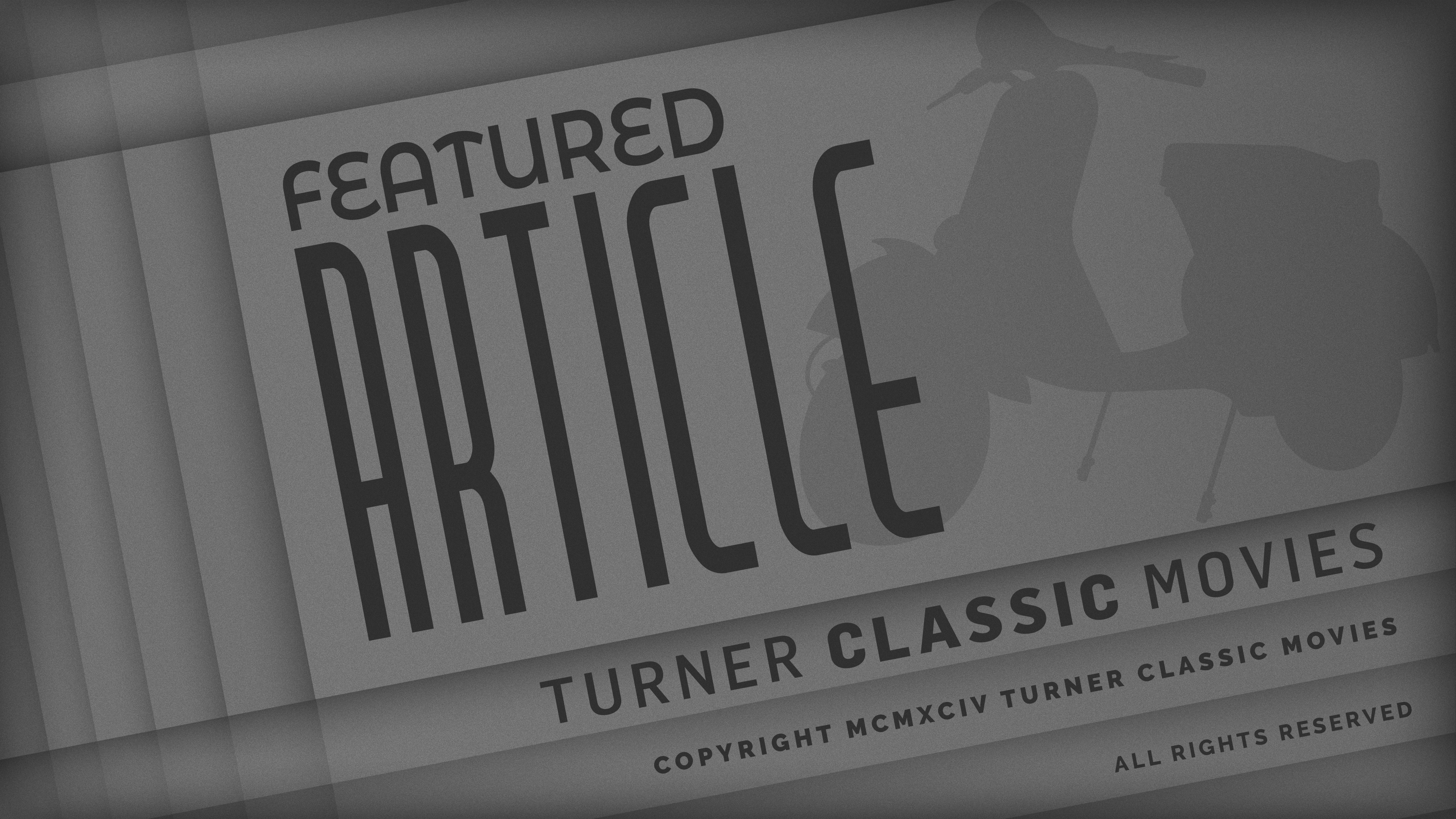
The Girl From Jones Beach
Virginia Mayo (1920-2005)
She was born Virginia Clara Jones in St. Louis, Missouri on November 30, 1920, and got her show business start at the age of six by enrolling in her aunt's School of Dramatic Expression. While still in her teens, she joined the nightclub circuit, and after paying her dues for a few years traveling across the country, she eventually caught the eye of movie mogul Samuel Goldwyn. He gave her a small role in her first film, starring future husband, Michael O'Shea, in Jack London (1943). She then received minor billing as a "Goldwyn Girl," in the Danny Kaye farce, Up In Arms (1944). Almost immediately, Goldwyn saw her natural movement, comfort and ease in front of the camera, and in just her fourth film, she landed a plumb lead opposite Bob Hope in The Princess and the Pirate (1944). She proved a hit with moviegoers, and her next two films would be with her most frequent leading man, Danny Kaye: Wonder Man (1945), and The Kid from Brooklyn (1946). Both films were big hits, and the chemistry between Mayo and Kaye - the classy, reserved blonde beauty clashing with the hyperactive clown - was surprisingly successful.
Mayo did make a brief break from light comedy, and gave a good performance as Dana Andrews' unfaithful wife, Marie, in the popular post-war drama, The Best Years of Their Lives (1946); but despite the good reviews, she was back with Kaye in The Secret Life of Walter Mitty (1947), and A Song Is Born (1948).
It wasn't until the following year that Mayo got the chance to sink her teeth into a meaty role. That film, White Heat (1949), and her role, as Cody Jarrett's (James Cagney) sluttish, conniving wife, Verna, is memorable for the sheer ruthlessness of her performance. Remember, it was Verna who shot Cody¿s mother in the back, and yet when Cody confronts her after he escapes from prison to exact revenge for her death, Verna effectively places the blame on Big Ed (Steve Cochran):
Verna: I can't tell you Cody!
Cody: Tell me!
Verna: Ed...he shot her in the back!!!
Critics and fans purred over the newfound versatility, yet strangely, she never found a part as juicy as Verna again. Her next film, with Cagney, The West Point Story (1950), was a pleasant enough musical; but her role as Lady Wellesley in Captain Horatio Hornblower R.N. (1951), co-starring Gregory Peck, was merely decorative; that of a burlesque queen attempting to earn a university degree in the gormless comedy, She¿s Working Her Way Through College (1952); and worst of all, the Biblical bomb, The Silver Chalice (1954) which was, incidentally, Paul Newman's film debut, and is a film he still derides as the worst of his career.
Realizing that her future in movies was slowing down, she turned to the supper club circuit in the 60s with her husband, Michael O'Shea, touring the country in such productions as No, No Nanette, Barefoot in the Park, Hello Dolly, and Butterflies Are Free. Like most performers who had outdistanced their glory days with the film industry, Mayo turned to television for the next two decades, appearing in such shows as Night Gallery, Police Story, Murder She Wrote, and Remington Steele. She even earned a recurring role in the short-lived NBC soap opera, Santa Barbara (1984-85), playing an aging hoofer named "Peaches DeLight." Mayo was married to O'Shea from 1947 until his death in 1973. She is survived by their daughter, Mary Johnston; and three grandsons.
by Michael T. Toole
Virginia Mayo (1920-2005)
Ronald Reagan, 1911-2004 - TCM Remembers Ronald Reagan
Ronald Reagan, the actor turned elected official whose fascinating career saw him develop as a contract player for Warner Brothers studios, to a politician who fulfilled his ambitions by becoming the 40th President of the United States, died at his home in Los Angeles on June 5 after a long battle with Alzheimer's disease. He was 93.
He was born Ronald Wilson Reagan on February 6, 1911 in Tampico, Illinois to John and Nelle Reagan. When Reagan was nine, his family settled down in the small community of Dixon, about 100 miles west of Chicago. After high school, Reagan enrolled in Eureka College, a small Christian school near Peoria. He graduated in 1932 with a degree in Economics, and pursued a career in broadcasting. His first gig was as a part-time announcer at WOC in Davenport, Iowa. Within a year, WOC had merged with its big-sister station, WHO in Des Moines, and Reagan was hired as a sports announcer.
In the spring of 1937, Reagan drove to Southern California to catch the Chicago Cubs in spring training on Santa Catalina Island. While he was in California, he wrangled a screen test and signed a contract for $200 a week with Warner Brothers. His film debut was rather inauspicious; he portrayed a radio announcer in an innocuous comedy Love is on the Air (1937). He made a few more "B" programmers like Hollywood Hotel (also 1937), and Girls on Probation (1938), before getting his first prominent role opposite Bette Davis in the popular tearjerker, Dark Victory (1939).
Although he seldom got credit for being a good actor, there was no denying that Reagan held his own given the right material: Knute Rockne, All American as the doomed Notre Dame football hero George "The Gipper" Gipp, where he delivered the film's immortal line "Win one for the Gipper!"; Santa Fe Trail in which he ably supports Errol Flynn in one of the boxoffice hits of its era (both 1940); Kings Row (1941), featuring one of his finest performances as a small-town playboy whose legs are amputated by a careless surgeon; and Desperate Journey (1942) where he again supported Flynn in an exciting action picture.
Due to his poor eyesight, Reagan didn't see any action in World War II, so the studio heads assigned him to star in a series of patriotic films produced by the First Motion Picture Unit of the Army Air Forces in Culver City. Between 1942-45, Reagan starred in over 400 of these films. After the war, Reagan still found some good roles: The Voice of the Turtle (1947) proved he had a deft hand at light comedy opposite Eleanor Parker; The Hasty Heart (1949) offered another underrated performance as he ably portrayed the Yank in John Patrick's much heralded wartime play; and Storm Warning (1950) was a slick melodrama that cast Reagan as a crusading District Attorney determined to bring the KKK in a small southern town, with the help of Doris Day and Ginger Rogers!
It was around this time that Reagan became involved in politics. In 1947, he began a five-year term as president of the Screen Actors Guild (SAG), and testified in October of that year before the newly formed House Un-American Activities Committee (HUAC). He identified suspected Communists Larry Parks, Howard Da Silva and Alexander Knox, all of whom were subsequently called to testify, and subsequently blacklisted. Later records showed Reagan was so concerned about the Communist influence in Hollywood, that he became an FBI informer.
As Reagan became steeped in his political career, his parts throughout the '50s became inferior: the notorious Bedtime for Bonzo (1951); the coy "sex" comedy She's Working Her Way Through College (1952) that cast him as a college professor who romances a stripper! (Virginia Mayo); Cattle Queen of Montana (1955), a sluggish Western that even the redoubtable Barbara Stanwyck couldn't save; and finally Hellcats of the Navy (1957), a stodgy war picture that would be his only film that co-starred his wife Nancy (Davis).
Television offered some salvation. For eight years, (1954-62), Reagan served as the host of General Electric Theater, a televised series of dramas. He also found a niche as GE's goodwill ambassador to employees and to civic and business groups around the country, furthering his taste and honing his craft as a public official. By the mid '60s, Reagan would move into politics entirely, save for one last film, the thrilling The Killers (1964), Reagan's only known villainous role, as a murderous gangster. That same year, he actively campaigned for Republican Presidential candidate Barry Goldwater, although Goldwater lost to Lyndon B. Johnson.
Reagan whose profile was riding high, had cemented his future as a successful politician. In 1966, he ran against incumbent Governor Pat Brown for the state of California and won, serving successfully for two terms until 1974.
Reagan began an all-out, two-year drive to wrest the 1976 nomination from incumbent Gerald R. Ford, an appointed vice president who became president on the resignation of Nixon. Reagan fell short by a handful of delegates to the Republican national convention. But Ford lost to Jimmy Carter, and Reagan became the front-runner to challenge Carter in 1980. After defeating Carter, Reagan held two terms as President of the United States (1981-89). After his second term was over, he retired quietly in California. In 1994, it was revealed to the media that Reagan was suffering from Alzheimer's disease; he had been kept out of the public eye since then.
He was married briefly to actress Jane Wyman (1940-48), and had two children; a daughter Maureen and an adopted son, Michael. In 1952, he married a budding film starlet, Nancy Davis, who bore him two more children; a daughter, Patty; and a son, Ronald Jr. Ronald Reagan is survived by Nancy, Michael, Patty and Ron Jr. His daughter Maureen died of Melanoma in 2001 at the age of 60.
by Michael T. Toole
Ronald Reagan, 1911-2004 - TCM Remembers Ronald Reagan
Quotes
Trivia
Notes
According to a February 19, 1948 New York Times news item, Julius J. and Philip G. Epstein were scheduled to work on the script of this film. On April 14, 1948, Hollywood Reporter reported that Dennis Morgan had been assigned to star in the film. Lauren Bacall was suspended when she turned down a role in the film, according to a April 19, 1948 Hollywood Reporter news item. The Girl from Jones Beach marked the last film appearance of character actor Henry Travers (1874-1965), best known for his role as the angel "Clarence Oddbody" in Frank Capra's It's a Wonderful Life (see below).

Miscellaneous Notes
Released in United States Summer July 16, 1949
Released in United States Summer July 16, 1949















